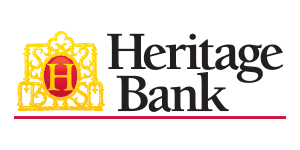Heritage Bank’s campaign wins pay dividends
Heritage Bank can now run a large number of highly targeted customer campaigns a week, rather than just several mass mailouts a year, thanks to a collaboration with SAS.
Heritage is Australia’s largest customer-owned bank and over time has built a reputation for ensuring that it puts top priority on achieving financial wellbeing for each of its customers.
To deliver on that goal, Heritage realised it needed to better understand the needs of individual customers, and better connect with them to help them achieve their goals at different life stages.
There was a clear need for Heritage to improve its communications delivery. With a direct marketing team of just one person, and the ability to only compile lists manually, many opportunities to get in touch with customers were passing it by.
There were many untapped opportunities but we couldn’t justify putting on more staff. We had to look at a way of using data to provide better ways to communicate to existing and potential customers.
Jane Calder
General Manager of Product and Marketing
Heritage Bank
Untapped opportunities
Jane Calder, Heritage’s General Manager of Product and Marketing, says campaigns were typically being run in a very disjointed manner. “It took weeks or months to get campaigns into market as it involved a number of different teams, and the data was unstructured and ad hoc,” she says.
One of Heritage’s biggest issues was the time it took to get a campaign out to market. “A typical campaign could take up to 4-5 weeks to get under way by the time you got a list out, did the creative, washed the lists and then checked the results,” Calder says. “Also everything was a mass communication piece rather than being targeted at individual customers, based on their behaviours and precise product holdings. We had to make a lot of compromises, which wasn’t optimal.”
Heritage was already using a SAS data warehouse and chose SAS Campaign Management to help with its goal of delivering automated trigger-based campaigns. It worked with SAS on pulling together the business processes, implementing the system and putting in place a number of test campaigns.
“SAS helped with determining what processes needed to change, clearing up the roles and responsibilities of the different teams, doing the solution design, testing and implementing the solution and then finally sending four test campaigns off,” Calder says.
Deepening customer relationships
The first test campaign was around transaction account on-boarding. Calder says the aim was to deepen the customer relationship once an account was opened by making sure the account was working effectively for the customer but also for Heritage.
“When someone opens a transaction account, we send them a communication encouraging them to activate their debit card if they haven’t done so after 14 days,” Calder says. “At other time intervals we also send reminders about services such as signing up for e-statements, crediting salary or paying bills using their account.”
A different test campaign focusing on cross-selling involved Heritage’s insurer partner. Calder explains the campaign looked for patterns in the data warehouse around payments made by customers to other insurers. “We sent that data to our insurance partner who do some propensity modelling and determine when someone’s insurance might be due,” she says. “Based on this data, we send out a communication to customers encouraging them to get an insurance quote from us. This campaign has proven really successful and we’ve had some good results.”
A third campaign centred on sales conversion and tracking those coming to Heritage’s website but then abandoning applications they may have started for a personal loan or credit card. “Based on whether they are a brand new customer or an existing one we’ll send them different EDMs to encourage them to come back and finish their application,” Calder says.
Calder says the results of the test campaigns have been very positive. “Overall we are very pleased with the response and conversion rate and the cost effectiveness of the campaigns to generate new sales,” she says. “Prior to the SAS Campaign Management implementation we would not have been able to run these types of campaigns.”
Digital integration
Heritage adopted a staged approach for the rollout with this first stage involving pushing out campaigns using EDMs, SMS and direct mail. “In time, we will integrate the solution with our customer facing channels – call centres and branches – so they can focus on inbound and outbound campaigns,” Calder says. “The final integration will be into our digital channels around mobile apps and internet banking.”
And while the productivity savings are important, Calder says the real value comes with the greater capability and massive gearing up in activity that Heritage can now put in place around campaigns.
"It’s about moving from mass communication campaigns to far more targeted ones and continuing to scale up."
We have moved from running 14 key mass campaigns a year to a stage where we are now running the equivalent of 40 highly relevant campaigns a week. And this will continue to increase as we scale up.
The long-standing relationship SAS has with Heritage is a key factor in the success of the implementation. “The SAS consultants were exceptional, especially in how they explained the process to different members of the team regardless of whether they had a database or marketing bent,” Calder says. “They were very good at coaching team members and helped them understand where the different responsibilities lay. That’s not something every vendor is able to do.”

Challenges
- Heritage Bank had a manual approach to its customer campaigns with some taking months to get to market. It wanted an automated solution that was able to quickly respond to the needs of its customers depending on behaviour and product holdings.
Solution
Benefits
- The number of marketing campaigns has increased dramatically and they are more highly targeted enabling Heritage to engage with its customers at a much deeper more relevant level.